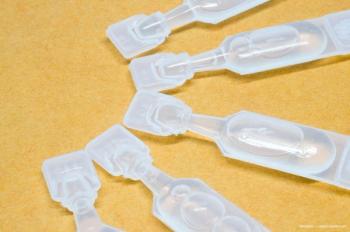
CTR does not avert spontaneous IOL dislocation
In what is believed to be the largest reported series of spontaneous in-the-bag IOL dislocation, investigators analyze presenting characteristics and outcomes for 21 eyes with a capsular tension ring (CTR) and 84 eyes without one.
Take-home message: In what is believed to be the largest reported series of spontaneous in-the-bag IOL dislocation, investigators analyze presenting characteristics and outcomes for 21 eyes with a capsular tension ring (CTR) and 84 eyes without one.
By Cheryl Guttman Krader; Reviewed by Betty Lorente, MD
Barcelona, Spain - Implantation of a
However, the presence of a CTR does appear to facilitate repositioning of the capsular-bag-IOL complex, according to research undertaken by Betty Lorente, MD, and colleagues.
The investigators analyzed data for 105 cases of in-the-bag
“In-the-bag IOL dislocation that occurs spontaneously many years after uneventful cataract surgery is the result of progressive zonular dehiscence,” said Dr. Lorente, fourth-year resident, Centro de Oftalmología Barraquer, Barcelona, Spain.
“Some authors advocate using a CTR in all cases to prevent this event, but the role of CTR is controversial as published reports document that in-the-bag IOL dislocation also occurs in eyes with a CTR,” Dr. Lorente explained. “Our study, which represents the largest series of in-the-bag IOL dislocation reported to date, shows that the presence of a CTR in the capsular bag does not prevent IOL dislocation.”
Eyes included in the study were identified through a retrospective search of the surgical database for the years 2005-2009 or were part of a prospective interventional case series operated on during the years 2010-2013.
Dislocation sooner in CTR eyes
The only significant difference found in comparing presentation characteristics of the two study groups was that the IOL dislocation occurred significantly sooner after surgery in eyes with a CTR than in those without, ~5 years versus 8.7 years.
“We believe this finding may be explained by the fact that a CTR was probably used at the time of surgery in the worst cases,” Dr. Lorente said.
There was no significant difference between the CTR and no CTR groups in mean age at the time of the IOL dislocation, 80.4 versus 81.9 years. The in-the-bag IOL dislocation was most often categorized as grade III (~60%; superior edge of the IOL below the visual axis), while almost 33% of eyes had a grade II dislocation (superior edge of the IOL above the visual axis). A grade III dislocation was the most common type in eyes without a CTR, whereas a grade II dislocation was more common than a grade III dislocation in eyes with a CTR.
The leading risk factor for IOL dislocation was pseudoexfoliation, which was present in 78 (74%) eyes and affected similar proportions of eyes with and without a CTR (81.0% versus 72.6%).
“Northern part of Spain has one of the highest rates of pseudoexfoliation in Europe,” Dr. Lorente said.
Glaucoma was the most common associated condition, being present in 52 eyes (46%). Again, there was no significant difference in the prevalence of glaucoma among eyes with and those without a CTR (52% versus 42%).
Almost 75% of the dislocated IOLs were acrylic, which corresponds with the fact that acrylic lenses are the most commonly used implants at the centers involved in the study.
Repair approaches, outcomes
Dislocation correction was done by repositioning of the IOL in 49 eyes, of which 48 had ab externo scleral fixation. Another 49 eyes underwent IOL exchange for either an anterior chamber IOL (29 eyes) or an iris-claw IOL (20 eyes). The proportion of eyes that underwent repositioning was slightly higher in eyes with a CTR than in those without.
Mean logMAR CDVA improved significantly after intervention, and was not significantly different comparing eyes with and without a CTR. Final mean logMAR CDVA was slightly better in eyes with an iris claw IOL than in both eyes with a scleral-fixated IOL or those with an anterior chamber IOL (0.33 versus 0.42 and 0.47), although the between-group differences were not statistically significant.
Not surprisingly, the types of complications encountered after intervention differed by procedure.
Dr. Lorente acknowledged that the study has limitations that are inherent to a retrospective design.
In addition, there was no standard protocol for CTR implantation in place at the participating centers, and comparisons between the CTR and no CTR groups may have been affected by their different sizes.
Betty Lorente, MD
Email:
This article was adapted from Dr. Lorente’s presentation during the 2014 meeting of the American Academy of Ophthalmology. Dr. Lorente has no relevant financial interests to disclose.
Newsletter
Don’t miss out—get Ophthalmology Times updates on the latest clinical advancements and expert interviews, straight to your inbox.



















































.png)


